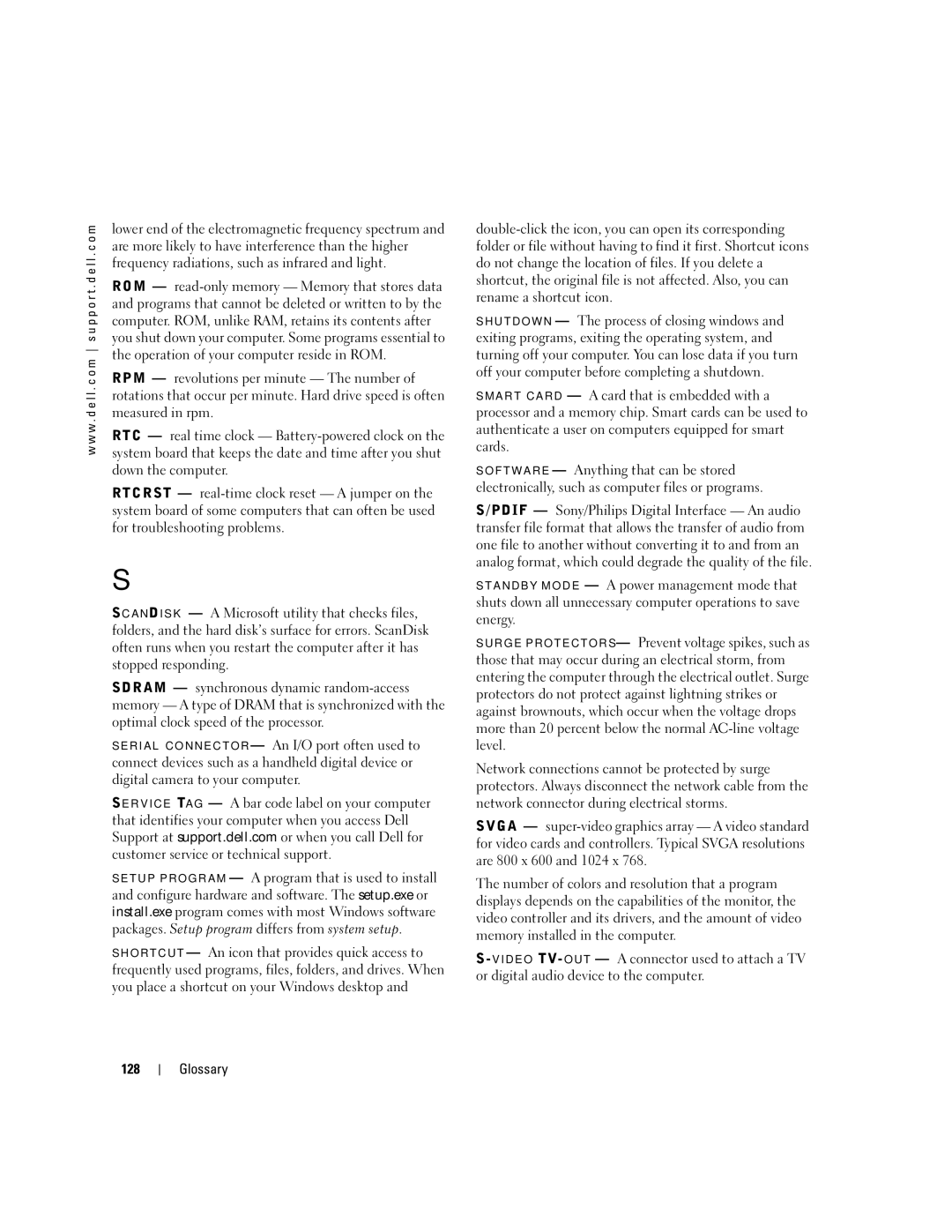m | lower end of the electromagnetic frequency spectrum and | |
c o | are more likely to have interference than the higher | |
l l . | frequency radiations, such as infrared and light. | |
t . d e | ||
ROM — | ||
o r | and programs that cannot be deleted or written to by the | |
p p | computer. ROM, unlike RAM, retains its contents after | |
s u | you shut down your computer. Some programs essential to | |
the operation of your computer reside in ROM. | ||
c o m | ||
RPM — revolutions per minute — The number of | ||
l l . | rotations that occur per minute. Hard drive speed is often | |
. d e | measured in rpm. | |
w w | RTC — real time clock — | |
w | system board that keeps the date and time after you shut | |
| ||
| down the computer. | |
| RTCRST — | |
| system board of some computers that can often be used | |
| for troubleshooting problems. |
S
SCANDISK — A Microsoft utility that checks files, folders, and the hard disk’s surface for errors. ScanDisk often runs when you restart the computer after it has stopped responding.
SDRAM — synchronous dynamic
SERIAL CONNECTOR — An I/O port often used to connect devices such as a handheld digital device or digital camera to your computer.
SER VICE TAG — A bar code label on your computer that identifies your computer when you access Dell Support at support.dell.com or when you call Dell for customer service or technical support.
SETUP PROGRAM — A program that is used to install and configure hardware and software. The setup.exe or install.exe program comes with most Windows software packages. Setup program differs from system setup.
SHORTCUT — An icon that provides quick access to frequently used programs, files, folders, and drives. When you place a shortcut on your Windows desktop and
SHUTDOWN — The process of closing windows and exiting programs, exiting the operating system, and turning off your computer. You can lose data if you turn off your computer before completing a shutdown.
SMART CARD — A card that is embedded with a processor and a memory chip. Smart cards can be used to authenticate a user on computers equipped for smart cards.
SOFTWARE — Anything that can be stored electronically, such as computer files or programs.
S/PDIF — Sony/Philips Digital Interface — An audio transfer file format that allows the transfer of audio from one file to another without converting it to and from an analog format, which could degrade the quality of the file.
STANDBY MODE — A power management mode that shuts down all unnecessary computer operations to save energy.
SURGE PROTECTORS — Prevent voltage spikes, such as those that may occur during an electrical storm, from entering the computer through the electrical outlet. Surge protectors do not protect against lightning strikes or against brownouts, which occur when the voltage drops more than 20 percent below the normal
Network connections cannot be protected by surge protectors. Always disconnect the network cable from the network connector during electrical storms.
SVGA —
The number of colors and resolution that a program displays depends on the capabilities of the monitor, the video controller and its drivers, and the amount of video memory installed in the computer.
